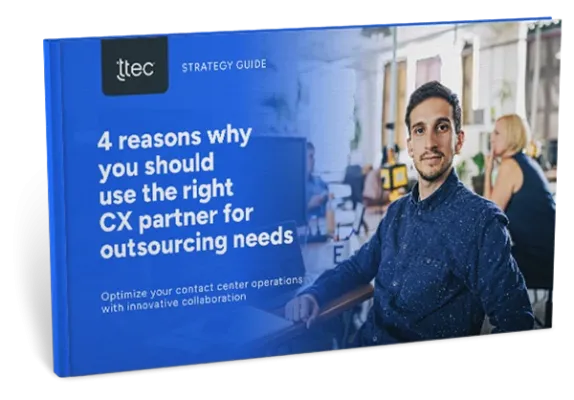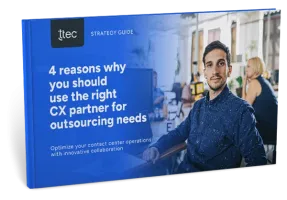In the automotive industry flat vehicle demand and declining customer loyalty have created tough competition, lower prices, and eroding profit margins. While price-cutting initiatives and financial incentives promise cost savings to customers, they fail to address the entire customer lifecycle ownership experience. A lack of tight integration of information and processes leaves many in the industry unprepared to meet changing customer expectations and individual needs.
Crippled by siloed platforms and departments, as well as disconnected third-party providers and dealerships, valuable information that could enhance automotive customer loyalty often lies hidden along the customer lifecycle. If extricated, this information can help original equipment manufacturers (OEMs) make better decisions and develop actionable strategic plans to differentiate themselves through the customer experience they deliver.
Nissan has come to realize that it must move away from discounts and differentiate its customer experience with actionable customer insight. According to David Mingle, senior director of customer loyalty, the company has identified the customer experience as a key competitive differentiator going forward and has begun to formulate a strategy around how to permeate it throughout the organization.
In recent years Nissan was plagued with a lack of a complete customer view, which made it nearly impossible to personalize or add context around the details of any customer inquiries. Also, this led to customers having to repeat their problems or situations to different customer care reps before getting resolution. "What was lacking was anything close to a 360-degree view of the customer," Mingle says. "It was difficult for anyone dealing with the customer to understand which activities preceded that event."
Mingle explains such disconnect was mainly due to a lack of integration from a process, platform, and infrastructure standpoint. "No two call centers were running the same tools and no two centers had access to the same kind of information," he says.
The final nail in the coffin was in 2010 when J.D. Power and Associates' Customer Experience rankings tied Nissan for dead last out of 36 OEMs. Internal customer satisfaction surveys didn't fare much better. Both showed that the company's customer experience rankings were well below most others in the industry. "Our executive team quickly agreed that this was a competitive disadvantage that we had to turn into a competitive advantage," Mingle explains. "We found that customer experience is a way to differentiate in an industry that under delivers."
Starting with customer listening Listening, analyzing, and acting on customer insight is critical, but Mingle admits operating on a one-to-one level requires an investment in infrastructure and tools. "It's easy to get caught up in the sexy stuff," he says. He and his team felt that it was most important to start with basic engagement strategies: customer listening and deploying a unified communications platform to help manage customer communications in a holistic fashion. Something as simple as not over- or under-communicating and being relevant to individual customers is crucial to a positive customer experience, even if it isn't as exciting as other initiatives.
To remedy the information and technology disconnect that threatened to hamper the customer experience, Nissan set out to build a platform to enable a seamless customer experience and launched a number of enterprise tools to help employees gain access to customer data. He says that the goal was to connect all the contact centers by centralizing the data and equipping them with the same data and case management tools. Some of the high-volume centers required more information-gathering and thus took longer to implement.
In these efforts, Nissan consolidated the management of all customer-facing contact centers and deployed a common CRM tool across all customer touchpoints. Nissan also launched a voice-of-the-customer (VOC) platform as a way to consolidate all customer feedback received throughout the different intervals in the ownership cycle, including purchase and repair. The VOC platform collects customer feedback from surveys and then identifies which ones require follow-up. The system then pushes them through the CRM platform for follow up. "We now have customer surveys coming in through a common VOC platform, which allow us to process, scale, and identify which ones require follow-up with the customer and dealer," he says. "We can quickly decide which ones need escalation to close the loop on the resolution."
Mingle explains that the goal was for every customer-facing employee to be able to engage the customer more effectively by providing them with the most relevant information.
Next Nissan turned inward to empower employees and dealers to use the system to its utmost potential. Mingle describes it as a governance and training process. All contact center associates have been trained to use the new CRM and VOC tools, and efforts are underway at the dealerships to help the employees analyze and understand the VOC data. "There are at least 10 to 15 swim lanes of training," Mingle says. "Some swim lanes are well down the path and others have just kicked off."
Focusing on customer outreach After Nissan integrated its contact center platforms and centralized its database, the company realized that it was sitting on a wealth of rich information. Additionally, Nissan had in place high-functioning capabilities to better engage with customers. To leverage its newfound position, Nissan then developed outbound marketing efforts and launched four new customer retention and lead generation initiatives that worked from the company's actionable data. After implementing the new CRM system and consolidating its customer data, Nissan found it could more effectively administer and scale targeted outbound campaigns.
Nissan will next be expanding its outbound efforts into online chat and other communications mediums, such as social media, to engage with prospects and customers, as well as deploying new targeted incentive offers and back-end reporting capabilities.
Mingle is most excited about its new 27-member Hot Alerts team. If a customer provides negative VOC feedback, a low score automatically triggers a message to the Hot Alerts team, which reaches out to the affected customer and if necessary the dealer to ensure that the negative situation is remedied. As a result of these efforts, Nissan has since seen a six-point jump in the latest J.D. Power and Associates study—one of the highest year-over-year improvements ever recorded by any auto company.
The customer experience reaches the C-suite Unifying technology and implementing formal processes are important elements in customer experience success, but so are actions taken at the executive level. Earlier this year, Nissan created a new customer experience organization it calls Customer Quality. For the first time, the company has an SVP-level executive champion with its own dedicated staff focused solely on customer experience. Mingle believes this is a huge distinction for Nissan. He explains that the new Customer Quality organization has shown the entire staff, including the dealers, that the company is committed to making customer experience a top priority.
"To now have a dedicated customer experience organization, with its own SVP representing the customer on our most senior-level operating committees, sends a clear message to the organization that we're not just talking about it, but organizing and putting money where our mouth is to make it happen," he says. "In big organizations, it's easy to lose focus over time on the initiatives like this. Customer Quality's sole focus is to improve the customer experience and it gives us confidence that we're committed."
Mingle also notes that since the customer experience organization was formed Nissan has enjoyed significant increases in NPS and can correlate those numbers with repurchase intent. "We've quickly become a listening organization to customer feedback more than ever before," he says.
Keeping customer experience momentum going will require continuous measurement and enhancement, Mingle says. His team meets monthly with stakeholders who monitor the contact center performance, the quality of the data, and the effectiveness of certain campaigns. They also cascade much of that information through the executive ranks to ensure continued efficiency.
"I don't think that providing great customer experience is work that is ever really done," Mingle says. "Customer expectations will continue to evolve and we'll learn what works and what doesn't work, and we'll do more of the former and less of the latter."















